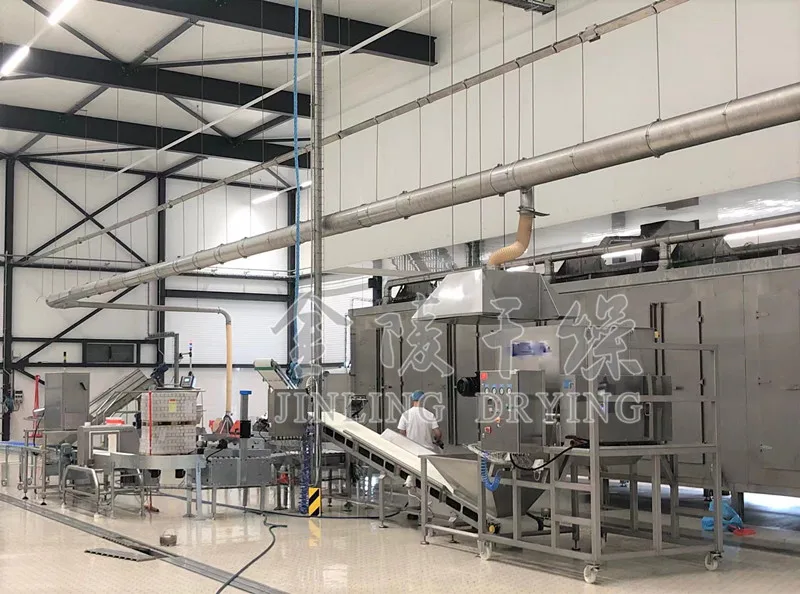The material is evenly spread on the mesh belt by the feeder. The mesh belt is generally made from 12 -60 mesh stainless steel wire, which is dragged and moved in the dryer by the transmission device.
Jiangsu Jinling Drying
841939990
| Availability: | |
|---|---|
| Quantity: | |
Product Description

can be added to the dryer.
pictures of belt dryer







Pre-service
Act as a good adviser and assistant of clients to enable them get rich and generous returns on their investments.
1. Introduce the product to the customer in detail, answer the question raised by customer carefully;
2.Make plans for choice according to the needs and special requirements of users in different sectors;
Sale service
1. Ensure product with high quality and pre-commissioning before delivery;
2. Delivery on time;
3.Provide full set of documents meet customer’s requirements.
After-sale service
Provide considerate services to minimize clients’ worries.
1.Assist clients to prepare for the first construction scheme;
2.Install and debug the equipment;
3.Train the first-line operators;
4. Examine the equipment;
5.Take initiative to eliminate the troubles rapidly;
6.Provide technical support;
7.Establish long-term and friendly relationship.
Service commitment
1. Provide clients one-year warranty to make sure the machine work well;
2.We always keep certain inventory level of spare parts, which means the replacements can be sent to you
Jiangsu Jinling Drying Technology Co., Ltd. was founded in 2000, as an innovation-oriented enterprise specialized in advanced technology.We have over 30 years of experience in machine manufacturing. We have achieved more than fifty national level patents and ten provincial level certificates for new high-tech products. There are more than 120 employees in our factory, Jinling is professionally engaged in designing, manufacturing over 30 series of drying equipment, environmental protection equipment, evaporation & concentration equipment and dry granulation equipment which are widely used for environmental protection field, chemical field, food field, national defense field etc.
Jinling is the qualified manufacturer of special pressure vessel, established the biggest drying & granulating testcenter in China, and passed the examination of ISO 9001, ISO 14001, OHSAS18001 and CE certification.Jinling's equipment has been spread all over China and has been exported to over 40 countries.


1. Q: Jiangsu Jinling Drying Technology Co., Ltd is a manufacturer, trading company or a third party?
A: We are a manufacturer, Our company established in 2000.
2. Q: Where is your factory located?
A: Jinling is located in Changzhou city, Jiansu province, China. it is In the middle of Shanghai and Nanjing.
3. Q: How can I go to your factory?
A: You can fly to shanghai Pudong or Hongqiao international airport directly, then take the high speed train to Changzhou station (just 1 hour from Shanghai to Changzhou by train) and we arrange to pick you up at Changzhou station to go to our company. Yutong company is around 30km away from Changzhou station.
If you are in China now, you can fly to Changzhou Benniu airport, or take train or bus to Changzhou city directly .
We sincerely welcome to visit our company at any time.
https://www.alibaba.com/product-detail/Moringa-oleifera-leaf-Stevia-leaf-mesh_1601387368539.html?spm=a2747.product_manager.0.0.591c71d2uZ8hOI